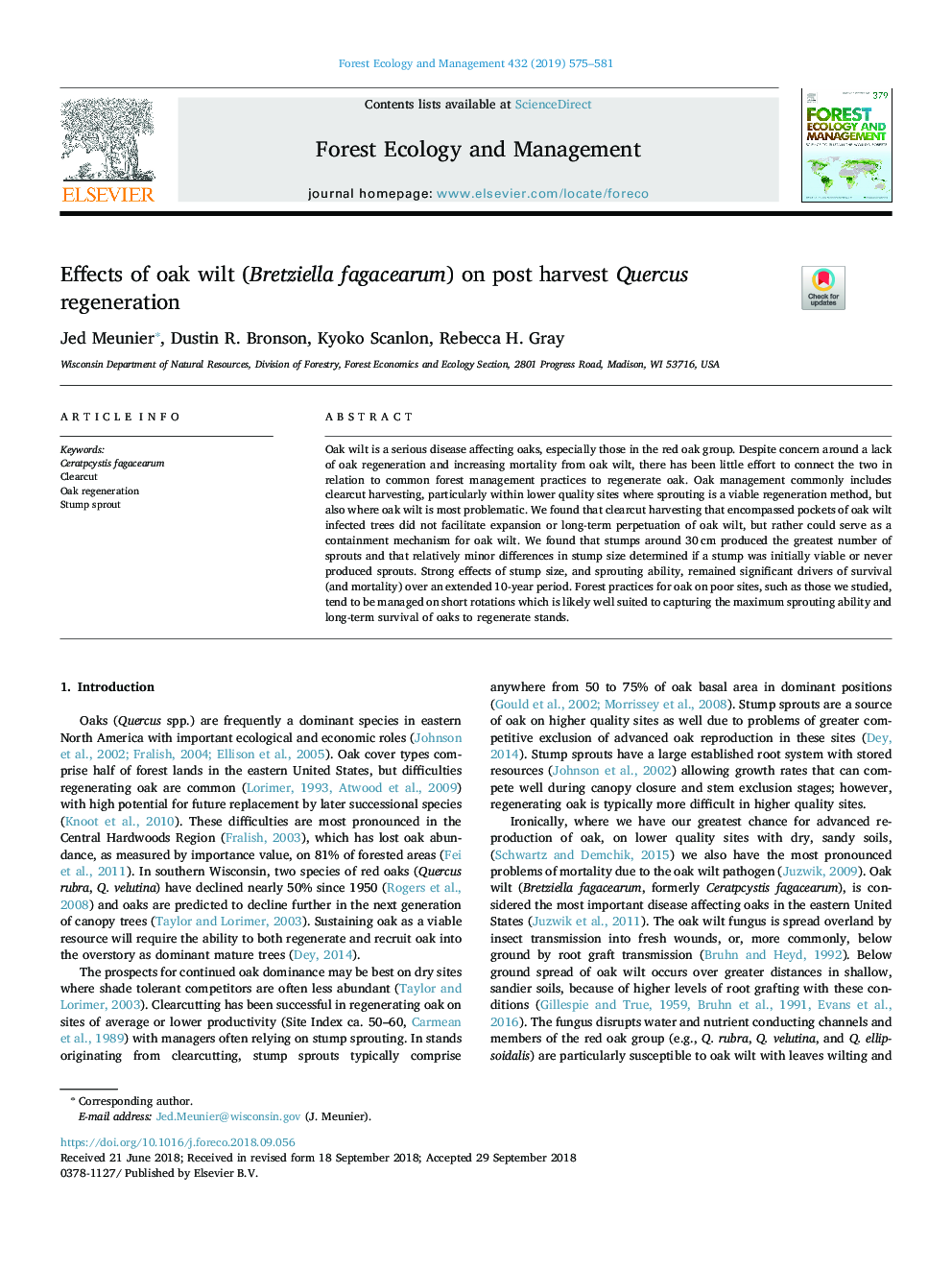| Article ID | Journal | Published Year | Pages | File Type |
|---|---|---|---|---|
| 11028378 | Forest Ecology and Management | 2019 | 7 Pages |
Abstract
Oak wilt is a serious disease affecting oaks, especially those in the red oak group. Despite concern around a lack of oak regeneration and increasing mortality from oak wilt, there has been little effort to connect the two in relation to common forest management practices to regenerate oak. Oak management commonly includes clearcut harvesting, particularly within lower quality sites where sprouting is a viable regeneration method, but also where oak wilt is most problematic. We found that clearcut harvesting that encompassed pockets of oak wilt infected trees did not facilitate expansion or long-term perpetuation of oak wilt, but rather could serve as a containment mechanism for oak wilt. We found that stumps around 30â¯cm produced the greatest number of sprouts and that relatively minor differences in stump size determined if a stump was initially viable or never produced sprouts. Strong effects of stump size, and sprouting ability, remained significant drivers of survival (and mortality) over an extended 10-year period. Forest practices for oak on poor sites, such as those we studied, tend to be managed on short rotations which is likely well suited to capturing the maximum sprouting ability and long-term survival of oaks to regenerate stands.
Keywords
Related Topics
Life Sciences
Agricultural and Biological Sciences
Ecology, Evolution, Behavior and Systematics
Authors
Jed Meunier, Dustin R. Bronson, Kyoko Scanlon, Rebecca H. Gray,
